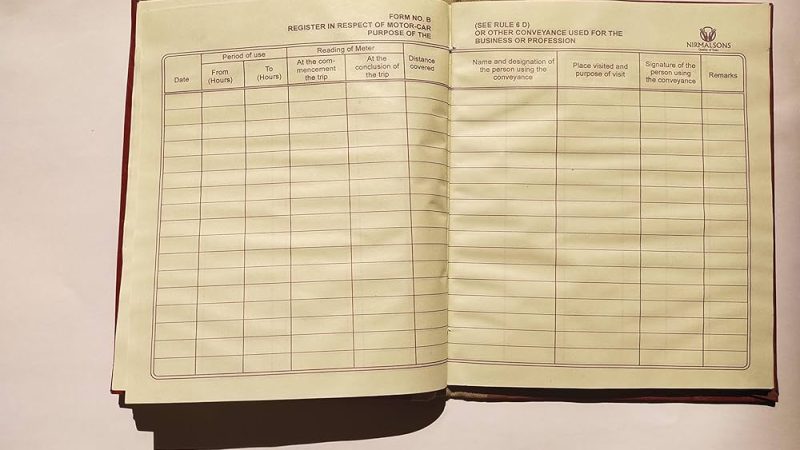If you’re a commercial driver, especially in freight or transport, maintaining a driver log book is not just good practice—it’s often a legal requirement. Whether you’re using a traditional paper log book or an electronic logging device (ELD), accurately recording your hours of service (HOS) helps ensure road safety, legal compliance, and proper rest periods.
In this article, we’ll explain what a driver log book is, how it works, who needs one, and how to complete it correctly—plus the difference between manual and electronic logs.
What Is a Driver Log Book?
A driver log book is a daily record that tracks a commercial driver’s working hours, breaks, and rest periods. It is designed to ensure compliance with Hours of Service regulations, which are enforced by agencies such as the Federal Motor Carrier Safety Administration (FMCSA) in the U.S. and similar regulatory bodies worldwide.
The Log Tracks:
- Start and end times of shifts
- Driving hours
- Off-duty hours and breaks
- Total hours worked per day/week
- Mileage and vehicle ID
Why It Matters: Overworked drivers are a leading cause of road accidents. A log book helps prevent fatigue-related incidents by ensuring proper rest.
Who Needs a Driver Log Book?
You may need a log book if you are:
- A truck driver transporting goods across state or national borders
- A bus or coach driver on long-distance routes
- A delivery driver working extended hours
- A fleet manager or owner-operator who oversees compliance
Exemptions may apply for local delivery drivers or those operating within a specific radius (check with your local transport authority).
Types of Driver Log Books
| Type | Description |
| Paper Log Book | Traditional manual book with grid format (also known as a DOT log book) |
| Electronic Log Book (ELD) | Digital system connected to the vehicle, automatically tracking HOS |
Paper vs Electronic Log Books:
| Feature | Paper Log Book | Electronic Log Book (ELD) |
| Accuracy | Depends on driver input | Automatically tracked via GPS |
| Compliance | Higher risk of errors | FMCSA-compliant in the U.S. |
| Tamper-proof | Low | High |
| Cost | Low upfront | Higher setup, but scalable |
How to Fill Out a Driver Log Book (Step-by-Step)
Required Sections in a Paper Log:
- Date and driver’s full name
- Vehicle number or license plate
- Odometer readings (start and end)
- Total miles driven
- Start and end locations
- Grid chart or timeline with:
Off-duty time
Sleeper berth (if applicable)
Driving time
On-duty (not driving) time
- Driver signature
Sample Time Entry Breakdown:
| Time Slot | Status | Location |
| 6:00 AM – 8:00 AM | Off-duty | Home terminal |
| 8:00 AM – 12:00 PM | Driving | Route to client |
| 12:00 PM – 1:00 PM | Break | Service stop |
| 1:00 PM – 5:00 PM | Driving | Client delivery |
Driver Log Book Requirements (U.S. & International)
In the U.S. (FMCSA rules):
- Maximum of 11 driving hours after 10 consecutive off-duty hours
- Must take a 30-minute break after 8 hours of driving
- Cannot drive beyond 60/70 hours on duty in 7/8 consecutive days
- Logs must be retained for 6 months by the motor carrier
In the UK & EU (Tachograph rules):
- Max 9 hours driving/day, 56 hours per week
- Minimum 11 hours of rest daily
- Use of digital tachographs is mandatory for most HGVs
Benefits of Maintaining an Accurate Driver Log Book
| Benefit | Explanation |
| Legal Compliance | Avoid fines, penalties, or disqualification |
| Operational Efficiency | Track productivity and plan better schedules |
| Safety on the Road | Prevent fatigue and improve public safety |
| Auditable Records | Easy documentation for inspections or disputes |
| Simplified Payroll | Supports hourly tracking for fair and accurate pay |
SEO Keyword Strategy
| Keyword | Placement |
| Driver log book | Title, meta, H1, intro, body, how-to section |
| Truck driver log book | Body content, examples, comparison |
| DOT log book | Definitions, paper log explanation |
| Driver hours of service | Rules and compliance section |
| How to fill out a log book | Step-by-step guide |
Internal linking suggestions:
- “Top apps for electronic log books”
- “HOS rules explained for new drivers”
- “How to avoid FMCSA fines for logbook violations”
- “Driver safety checklist for long-haul trips”
Conclusion
Whether you’re an independent driver or managing a fleet, using a driver log book is essential for compliance, safety, and efficiency. With stricter transport laws and increased scrutiny, accurate log keeping is not just about rules—it’s about responsibility.
Choose the right format for your needs, understand the regulations, and make log entries a daily habit. A well-maintained log is your best defense and best tool on the road.
FAQs
1. Are electronic log books required by law?
In the U.S., ELDs are required for most commercial drivers under FMCSA regulations unless an exemption applies.
2. Can I still use a paper log book?
Yes, if you meet certain criteria, such as short-haul exemptions or temporary malfunctions of your ELD.
3. What happens if my log book has errors?
Errors can lead to fines, inspections, or loss of driving privileges. Always review and correct mistakes promptly.
4. How long should I keep my log books?
Carriers must keep HOS records for at least 6 months, while drivers typically carry 7–8 days’ logs during inspections.
5. Do local delivery drivers need a log book?
Many are exempt under short-haul rules, but it’s important to check local laws or consult your fleet manager.
Also read: SurePayroll Login: How to Access Your Payroll Dashboard Easily & Securely









